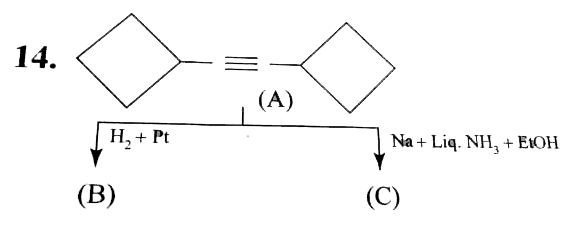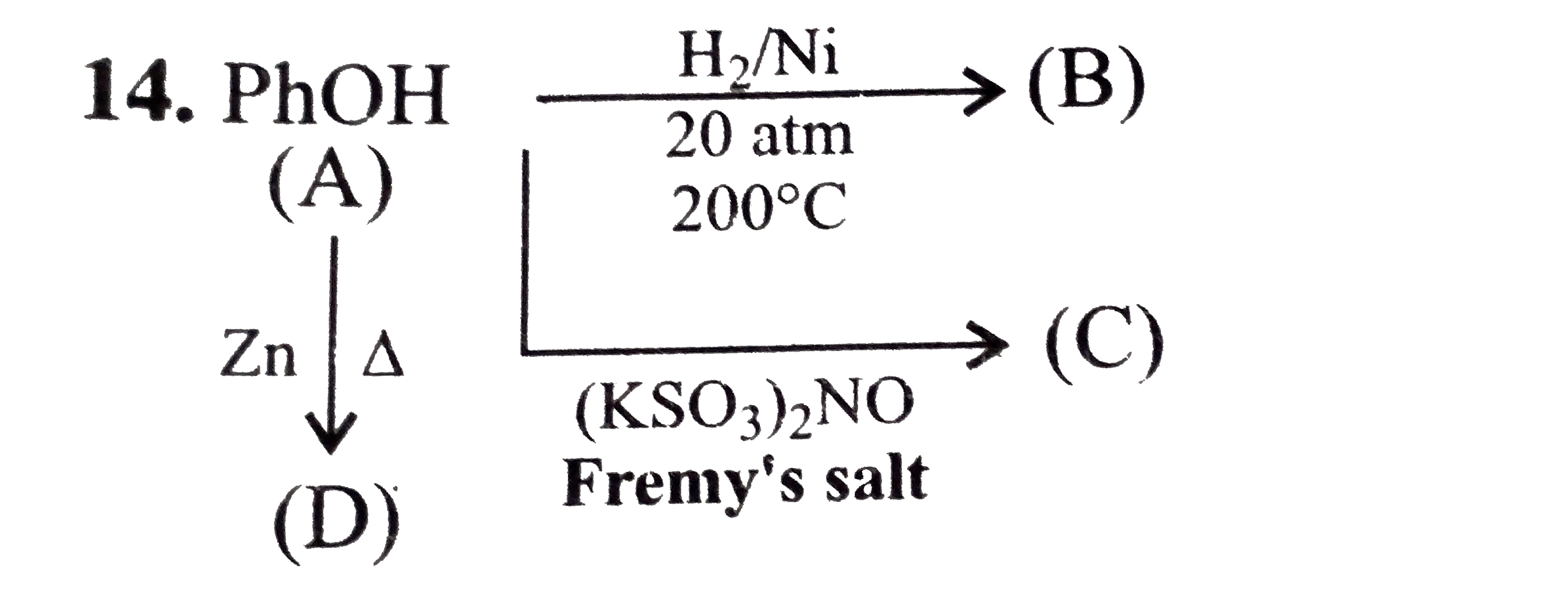A compound 'A' when reacts with LiAlH4 it gives two compounds B and C along with LiCl. Compounds A, B and C respectively are
HCl, H2 and AlCl3
BCl3, H2 and AlCl3
BCl3, B2H2 and AlCl3
B2H6, BCl3 and AlCl3
To solve the question, we need to identify the compounds A, B, and C based on the reaction with lithium aluminium hydride (LiAlH4) and the formation of LiCl.
1. Identify Compound A:
The question states that compound A reacts with LiAlH4 to produce two compounds (B and C) and LiCl. Given the context, we can deduce that compound A is likely to be a halide compound, specifically a boron halide, since the reaction involves the formation of diborane (B2H6) which is a known product of the reaction of boron trihalides with LiAlH4.
Hint: Look for compounds that can produce LiCl and are known to react with LiAlH4.
2. Determine the Reaction:
The reaction of boron trichloride (BCl3) with LiAlH4 can be represented as follows:
4BCl3+3LiAlH4→2B2H6+3LiCl+3AlCl3
Here, BCl3 reacts with LiAlH4 to produce diborane (B2H6) and aluminum chloride (AlCl3) along with LiCl.
Hint: Consider the stoichiometry of the reaction to identify the products formed.
3. Identify Compounds B and C:
From the balanced equation:
- Compound B is diborane (B2H6).
- Compound C is aluminum chloride (AlCl3).
Hint: Check the products formed in the reaction and match them with the given options.
4. Conclusion:
Based on the above deductions:
- Compound A is BCl3 (Boron trichloride).
- Compound B is B2H6 (Diborane).
- Compound C is AlCl3 (Aluminum chloride).
Therefore, the final answer is:
- A = BCl3
- B = B2H6
- C = AlCl3
Final Answer:
- Compounds A, B, and C are:
- A = BCl3
- B = B2H6
- C = AlCl3
The question states that compound A reacts with LiAlH4 to produce two compounds (B and C) and LiCl. Given the context, we can deduce that compound A is likely to be a halide compound, specifically a boron halide, since the reaction involves the formation of diborane (B2H6) which is a known product of the reaction of boron trihalides with LiAlH4.
The reaction of boron trichloride (BCl3) with LiAlH4 can be represented as follows:
4BCl3+3LiAlH4→2B2H6+3LiCl+3AlCl3
Here, BCl3 reacts with LiAlH4 to produce diborane (B2H6) and aluminum chloride (AlCl3) along with LiCl.
From the balanced equation:
- Compound B is diborane (B2H6).
- Compound C is aluminum chloride (AlCl3).
Based on the above deductions:
- Compound A is BCl3 (Boron trichloride).
- Compound B is B2H6 (Diborane).
- Compound C is AlCl3 (Aluminum chloride).
- A = BCl3
- B = B2H6
- C = AlCl3
- Compounds A, B, and C are:
- A = BCl3
- B = B2H6
- C = AlCl3
Topper's Solved these Questions
Similar Questions
Knowledge Check
The compound which on reduction with LiAlH4 gives two different alcohols is :
ACH3COOCH3BCH3COOC2H5CCH3COCH3DCH3CHO

Compounds (B) and (C) are:
View Solution
The compound (B) and (C ), respectively, are:
View Solution
Compounds (B) and (C) are :
View Solution
Compound (B) and (C) are :
View Solution
The compounds (B), (C ), (D), respectively are:
View SolutionTwo moles of organic compounds 'A' on treatment with a strong base gives two compounds 'B' and 'C'. Compound 'B' on dehydrogention with Cu gives 'A' while acidification of 'C' yields carboxylic and 'D' with molecular formula of CH2O2. Identify the compound A, B, C, and D.
View SolutionCompound A (C6H12O2) on reduction with LiAlH4, yielded two compounds B and C. The compound B on oxidation gave D which upon treatment with aqueous alkali and subsequent heating furnished E. The latter on catalytic hydrogenation gave C. The compound D was oxidised further to give F which was found to be a monobasic acid (molecular) formula weight = 60. Deduce the structures of A, B, C, D and E.
View Solution


